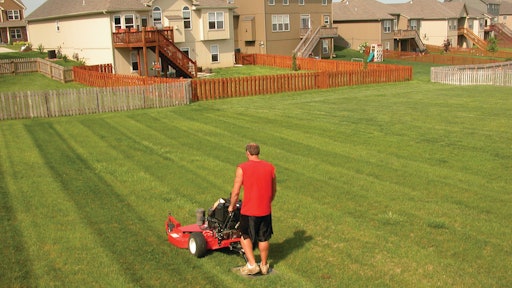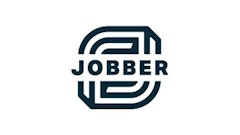
Growing and scaling a landscape management business is tough. Factors such as employee retention, competition, equipment investment and cost management create constant pressure, making it challenging to grow a small operation into a full-scale organization.
Like most Green Industry entrepreneurs, Bryan Clayton started his company as a one-man army. "Over a 15-year journey, I grew it to a 100-man organization with $7 million in sales," he relates. Some of the most challenging points of that journey relate to the periods of balancing what he calls “in it vs. on it.”
Below are Bryan's insights and advice for contractors facing these same challenges.
When do you stop "doing the work," and what happens next?
In the early days, I physically executed services up until our seventh hire. At that point, I was freed up to take a step back to handle sales, business development, and simply run my small organization.
Getting to that point was difficult. I was “in it” all day running a crew while one or two other crews were also working. I would make schedules out at night, have a huddle with the crews every morning, and then go run my crew. This was my daily cycle for a few years.
My main challenge was developing key, reliable crew foremen that I could trust to perform quality work for our customers. I personally trained my early crew leaders, working alongside them for at least six months until I granted them the responsibility of their own route.
For several years I juggled the “in it” tasks and “on it” tasks. I would make sales calls, cold calling local businesses during the day while running my route. At night I would perform the bookkeeping. Over time, I was able to transition out of the field activities to begin to focus on the operation and growth of the business.
Three crews change everything
When my lawn maintenance operation grew to three crews comprised of 10 employees, the dynamics of running a real business operation came into play. The flying by the seat of my pants and just making up the plan as I went along were no longer sufficient strategies for running a real business. It’s at this tipping point that many landscape companies get into trouble, losing control of expenses, managing cash flow, and managing profit margins on lawn maintenance accounts.
At this stage, many small business owners might feel that since they have worked so hard for so long, running the business from this point on is going to get easier. Nothing could be further from the truth. The challenges will also grow as the business scales, but the journey can be worth it.
Here are a few points of advice I would give to lawn and landscaping business owners at this stage of their growth, because at this stage it’s time to run your small business like a big business.
Game plan creation. Where are you headed? Set one-, three- and five-year goals. Lay out milestones for sales and profit. Make a step-by-step plan of attack and hold yourself accountable to knock those milestones down. I would recommend working with a Green Industry consultant. There are many excellent consultants associated with the PLANET association. Spend at least a day with one and develop an ongoing relationship; they will help keep you on track and will be a critical contributor to your success.
Budgeting. Make a budget and review it monthly. The PLANET organization has a great budget template. This is crucial to keeping you on track and keeping control of your business.
Legal and compliance. Something often overlooked that can kill a business before it has a chance to flourish are the landmines associated with Human Resource compliance; legal issues and lawsuits from clients and employees; and compliance with local, state and federal agencies such as the Department of Labor, Department of Homeland Security, OSHA and IRS.
It is critical that you build relationships with a CPA firm and legal and insurance professionals. Now that your little business is growing into a bigger business, it will be a target. Your company will be susceptible to lawsuits from disgruntled employees and visits from a myriad of governmental agencies in search of needed revenue. It’s best to be bulletproof and ready when it happens.
Equipment. As your business grows, it can be tempting to add equipment when it feels necessary, and even more tempting to finance it. I would strongly encourage business owners to use financing sparingly, as you can easily find yourself in business only to service your debt and nothing more. What’s worse is that the equipment value is destroyed much quicker than it is paid off by monthly payments. It's business owners overextending themselves on debt that usually leads to a contribution to failure. Defer acquisition of new equipment until you can pay cash, and you’ll increase your chances of successful and safe growth.
Business development. Now that you are freed from being “in it,” you can apply focus to new sales and customer acquisition. As the business owner, being the primary advocate for your business is crucial.
At this stage it is tempting to undersell work—and your competitors—in order to get more customers. I would strongly recommend that you do not attempt to undersell larger competitors. Their fixed costs are spread across a larger volume of revenue, and they probably have better systems in place to execute services and control costs. Rather than go head-to-head with them on pricing, focus on what they do not do well. Personalized service, the little details, and higher service quality are some places to look for competitive advantages over your larger competitors.
Final observations
While in business for 15 years, I continually observed small landscape companies trying to break through and become big operations—and nine out of 10 never did, mainly because they made critical mistakes with one or more of the issues I have outlined. I share these thoughts to help fellow Green Industry business owners succeed with scaling their operations. With hard work and planning, your little business could become the respected landscape organization in your city. As you scale your organization, you’ll be able to add team members to focus on the “in it” tasks while you focus on staying “on it.”





























